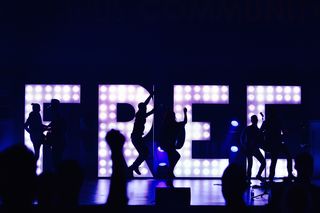Creativity
The Apparent Paradox of Creativity
A new study shows creativity is related to both vulnerabilities and strengths.
Posted April 15, 2020 Reviewed by Gary Drevitch

A new paper from my lab in the journal Psychology of Aesthetics, Creativity, and the Arts examines the perennial question of psychological vulnerabilities and strengths in artists and creative individuals more generally. Researchers at the Yale Center for Emotional Intelligence, supported by the National Endowment for the Arts, found that artists and other creative individuals are more likely to be described by a combination of higher than average psychological vulnerabilities like stress and anxiety and psychological strengths such as hope and ego resiliency than their less creative counterparts.
This project was inspired by a description of creative individuals as “at once both naive and knowledgeable, destructive and constructive, occasionally crazier yet adamantly saner” by Frank Barron, a creativity scholar in the first golden age of creativity research during the space race of the 1950s and 1960s. As the United States competed with the Soviet Union, it became apparent that we needed to better understand who was creative and who could be creative in the future. Barron was in the middle of creativity research at the University of California at Berkeley where he and his colleagues studied different groups of people like graduate students, mathematicians, artists, and architects. They did not test a single hypothesis or idea at a time, but involved study participants in multiple days of assessments, including cognitive tests, personality measures, observations, and discussions. If creative individuals could be “at once both naive and knowledgeable, destructive and constructive, occasionally crazier yet adamantly saner," what did that look like?
In my lab, we recruited two groups of people to examine this question: visual artists who were faculty at top art schools and a general sample of people who were not selected to be especially creative. We decided to study artists because they have to be professionally creative. All participants completed measures of creativity in their everyday life. They were not just asked about artistic creativity, but also creativity in the sciences, technology or invention, writing, entrepreneurship, design, humor, or cooking.
We asked all participants to complete a set of assessments of various psychological resources and vulnerabilities. All psychological vulnerabilities studied – including stress, anxiety, and depression – were shown in previous research to negatively affect both mental and physical health. We did not examine anxiety and depression as mental illness diagnoses, but rather asked questions about everyday experiences of anxiety and depression-related feelings and symptoms. For example, we asked how often in the previous week people “found it difficult to work up the initiative to do things," how often they “found it hard to wind down," or “experienced breathing difficulty (e.g., excessively rapid breathing, breathlessness in the absence of physical exertion)."
All psychological resources we studied – hope, psychological well-being, and ego resiliency – were shown in previous research to predict positive life outcomes. Hope is the “I will get through this” attitude combined with a consideration of multiple and flexible ways towards one’s goals. Ego resiliency is one’s capacity to successfully recover from difficulties; those with high ego resiliency describe themselves as having a “strong” personality, as recovering quickly from being startled, as able to find things that keep them interested in their daily lives, and as managing to leave a positive impression on others. Similarly, psychological well-being includes a sense of purpose in life, personal growth, self-acceptance, a sense of competence in responding to everyday challenges, a sense of autonomy, and positive relations with others. These qualities are psychological resources because they predict more positive outcomes when facing illness (such as multiple sclerosis) or when having to deal with challenging life experiences (e.g., being a parent of a child with a behavioral disorder), and are related to biomarkers of physical health (e.g., lower cardiovascular risk, gene expression profiles related to less inflammation). These psychological resources contribute to mental and physical health even after taking into account adjustment before the illness or other challenges and taking into account the severity of symptoms.
What did our study find? First, artists showed more anxiety and stress, but also greater hope, ego resiliency, and psychological well-being. In this way, artists are both better off than the general population (because they have higher psychological resources) and worse off (because they have higher psychological vulnerabilities).
In addition to examining each of the vulnerabilities and resources separately, we studied combinations of resources and vulnerabilities. For most people, more vulnerabilities are related to fewer resources. It makes sense that if people experience more symptoms of stress, anxiety, or depression, they are less likely to have hope or be psychologically well. However, this pattern of higher vulnerabilities and fewer psychological resources does not apply to everyone. About a quarter of people have both average vulnerabilities and average resources and one in ten have above-average vulnerabilities and resources.
Artists were more likely to show both vulnerabilities and resources than non-artists. We recruited artists as they are known for their creativity, but we were not interested in only artistic creativity. We also examined creativity more generally, beyond visual arts, and found that more creative individuals are more likely to be at the same time above average in psychological vulnerabilities and resources.
In other words, Frank Barron was right. There is something “occasionally crazier yet adamantly saner” about creative individuals. Creative individuals are not uniquely better off (or happier) or worse off (as the stereotype of the suffering artist implies). Rather, they balance vulnerabilities and resources. It is likely that their resources help them respond to the challenges they face. The exact nature of vulnerabilities and resources might depend on the specific domain of creativity – whether we are talking about artists, or scientists, or entrepreneurs – something that we will have to study in the future.
References
Fredrickson, B. L., Grewen, K. M., Coffey, K. A., Algoe, S. B., Firestine, A. M., Arevalo, J. M. G., Ma, J., & Cole, S. W. (2013). A functional genomic perspective on human well-being. Proceedings of the National Academy of Sciences, 110, 13684–13689.
Ivcevic, Z., Grossman, E., & Ranjan, A. (2020). Patterns of psychological vulnerabilities and resources in artists and nonartists. Psychology of Aesthetics, Creativity, and the Arts. Advance online publication. https://doi.org/10.1037/aca0000309
Kashdan, T. B., Pelham, W. E., Lang, A. R., Hoza, B., Jacob, R. J., Jennings, J. R., Blumenthal, J. D., & Gnagy, E. M. (2002). Hope and optimism as human strengths in parents of children with externalizing disorders: Stress is in the eye of the beholder. Journal of Social and Clinical Psychology, 21, 441-468. https://doi.org/10.1521/jscp.21.4.441.22597
Madan, S., & Pakenham, K. I. (2014). The stress-buffering effects of hope on adjustment to multiple sclerosis. International Journal of Behavioral Medicine, 21(6), 877–890. doi: 10.1007/s12529-013-9384-0
Ryff, C. D., Singer, B. H., & Love, G. D. (2004). Positive health: connecting well-being with biology. Philosophical Transactions of the Royal Society London: Biological Sciences, 359(1449), 1383–1394. doi: 10.1098/rstb.2004.1521
Hampson, S. E., & Friedman, H. S. (2008). Personality and health: A lifespan perspective. In O. P. John, R. W. Robins, & L. A. Pervin (Eds.), Handbook of personality: Theory and research (pp. 770-794). New York, NY, US: Guilford Press.
Artists have vulnerabilities and strengths Source: William White/Unsplash Artists have vulnerabilities and strengths Source: William White/Unsplash

